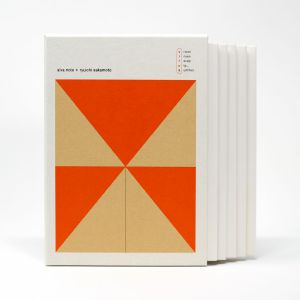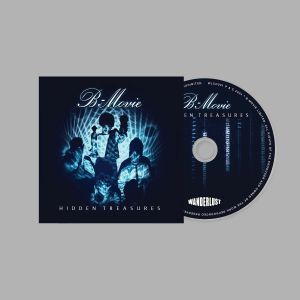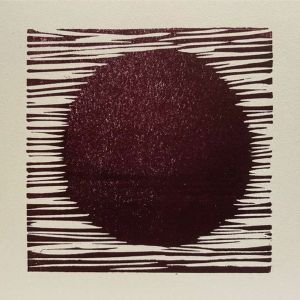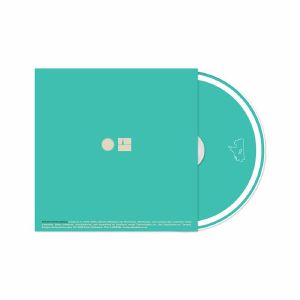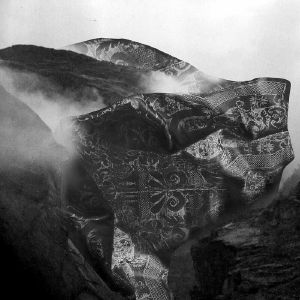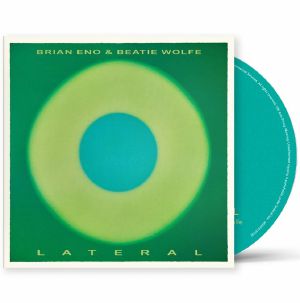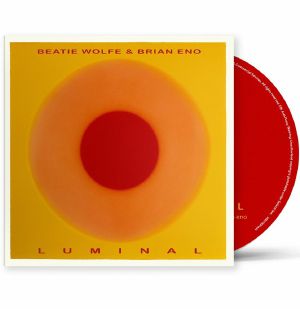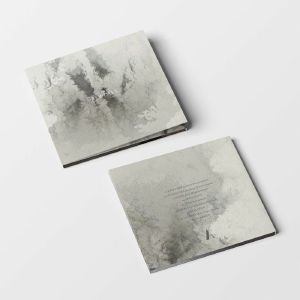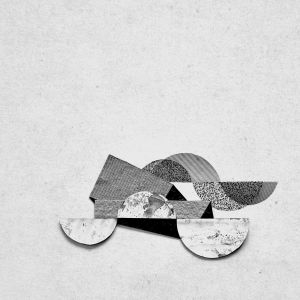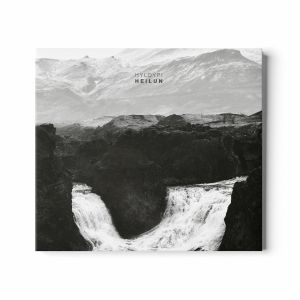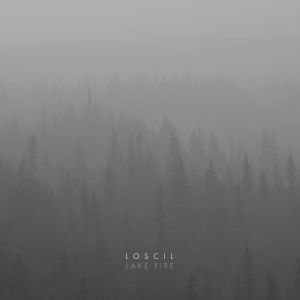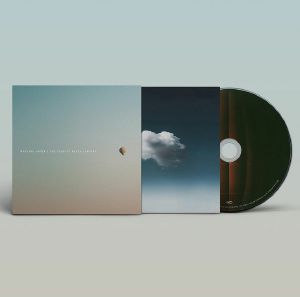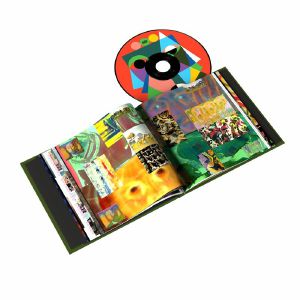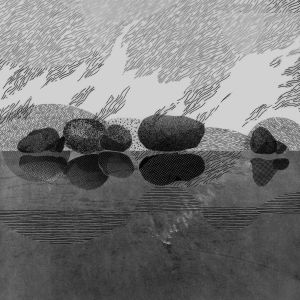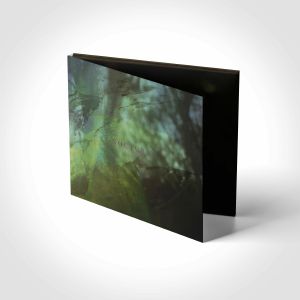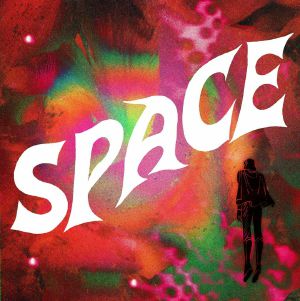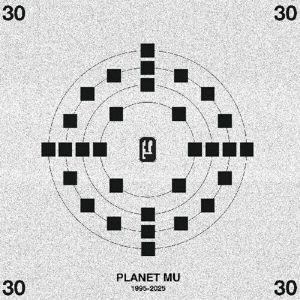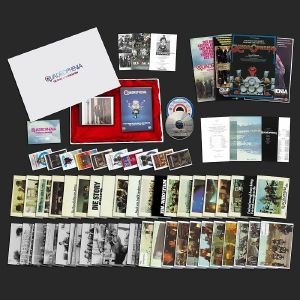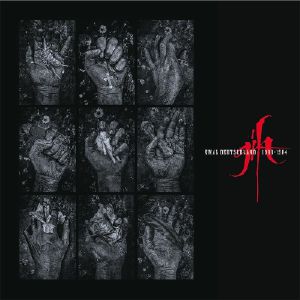Back catalogue: Leftfield
Juno's full catalogue of Leftfield
Albums
Review: This beautifully presented box set gathers all five albums from Alva Noto and Ryuichi Sakamoti's V.I.R.U.S series, a collaborative project spanning five albums originally released between 2002 and 2011. Disc one (Vrioon) sets the tone, with Sakamoto's beautiful (and frequently effects-laden) piano motifs rising above glitchy minimalist rhythms and experimental ambient soundscapes. The albums that follow offer subtle shifts in their collaborative sound whilst retaining the same core artistic approach, with the pair frequently alternating between poignant, slow-burn minimalism and emotive, mood-enhancing ambient maximalism. Throughout, the pair beautifully balance hard-wired electronic experimentalism with classical musicality.
… Read more in stock $180.94
Review: Mansfield's B-Movie were among a clutch of bands in the early 80s whose members had abandoned their formative thrashy guitar punk influences, and embraced broader, arty, keyboard-laden electronic post-punk. They had a light and catchy, yet brooding Cure-esque hit titled 'Remembrance Day', which shot them up the ranks on the UK gig scene and landed them a record deal. Most of the material they recorded once they got signed was, however, confined to Universal's vaults until very recently because B-Movie had line-up issues that hindered their ability to release an album. Now out of the clutches of contractual obligations, the band have unearthed the album that never was and titled it - quite aptly - Hidden Treasures. Ultimately, they are one of the great 'lost' bands of the early 80s and upon tuning in you can hear that they had in abundance the individuality, style and excellence to have shot them up the charts and made them a household name, had this material been their debut album. Thankfully, they have righted the wrongs of history and they can hold their heads up high forever for having made such brilliant music in their first era.
… Read more in stock $13.02
Cat: RM 4238CD. Rel: 12 May 25
Review: With a title inspired by the utterances of The Oracle of Delphi, a cult of female priestesses who reportedly "changed the course of civilisation" by inhaling volcanic vapours, it's clear that Lee Burtucci and Olivia Block's first collaborative album is rooted in paganistic visions and experimental mysticism. It's comprised of two lengthy tracks, each accompanied by edited 'excerpts', and combines Burtucci's experimental synth sounds and tape loops with Block's processed vocalisations and hazy field recordings. Dark and suspenseful, with each extended composition delivering a mixture of mind-mangling electronics, creepy ambience and musical elements doused in trippy effects, it sits somewhere between the charred "illbient" of DJ Spooky and the deep space soundscapes of the late Pete Namlook.
… Read morePlayed by: Juno Recommends Ambient/Drone
in stock $15.29
Review: Last year, regular collaborators Ian Boddy (a Sunderland-based electronics wizard who founded the ambient-focused DiN imprint years ago) and Erik Wallo (a long-serving Norwegian guitarist primiarly known for his experimental and ambient releases) performed their first joint concert for a decade. It's that performance, where they jammed out extended and much-changed versions of tracks featured on some of their prior studio sets, which forms the basis of their latest full-length, Transmissions. As you'd expect, it's a wonderfully atmospheric and evocative affair that gets the most out of both artists, with highlights including the wonderfully creepy 'Uncharted', the krautrock-style hypnotism of 'Aboena', the icy and ethereal 'Ice Station' and the slow-burn bliss of 'Salvage'.
… Read more in stock $14.16
Cat: LM 001CD. Rel: 29 May 25
Review: While he may well be best-known for his nostalgic, synthesiser-powered Warrington-Runcorn New Town Development Plan project, Gordon Chapman-Fox has also put out some fine music under his given name - not least 2023's ambient opus on Castles In Space's 'Subscription Library' offshoot. On Very Quiet Music To Be Played Very Loudly, Chapman-Fox delivers four expansive ambient soundscapes. He sets the tone with the Vangelis-esque synth suspense and spacey creep of 'Components', before opting for sustained, almost neo-classical sweeps and delay-laden electronic string sounds on 'Fringe'. 'Emphasis' is immersive and quietly picturesque, while closing cut 'Singular' is dark, moody and quietly paganistic - a kind of imaginary soundtrack to a 21st century folk-horror movie.
… Read more in stock $12.18
Detroit Interpretations (CD limited to 100 copies)
Cat: SCR 384. Rel: 02 May 25
Review: To mark the one-year anniversary of Reveries, Sonic Cathedral drops a new two-tracker that brings a Detroit reimagining to 'Vale' and 'Cadere'. Produced by John Hanson, aka Saltbreaker, the project features live improvisations by saxophonists Yali Rivlin and Thalamus Morris and cellist Jordan Hamilton. Each of them did their thing in a single take with Hanson composing around their performances, and the result is a graceful blend of serene melancholy and rhythmic sophistication. Oodles of warmth and organic textured is added to the originals and these interpretations act as a fine tribute to Detroit's enduring uniqueness.
… Read more! low stock $7.37
Pale Ravine (20th Anniversary Extended Edition) (CD limited to 300 copies)
Cat: MIACD 035. Rel: 30 May 25
Review: Deaf Center's debut LP gets a 20-year anniversary reissue on CD, pairing the original 2005 album with 20 minutes of unreleased material from the same sessions. Originally out on Type, Pale Ravine marked the first full-length by Erik K Skodvin and Otto A Totland, who've since carved solo paths via Sonic Pieces. Drifting between chamber composition, shadowy electronics and the hiss of old tape, the record draws on their Norwegian roots and personal family histories. Grainy textures, ghostly pianos and wind-blown field recordings conjure a mood somewhere between forgotten reels of silent film and weather-worn Nordic folklore.
… Read more in stock $21.80
Review: Brian Eno's career has always been about explorationiof sound, technology and the emotional power of music. After pioneering ambient music, Eno has consistently sought out new ways to blend different genres and voices and his latest collaboration with Beatie Wolfe continues this tradition. Wolfe, a British-American artist with an innovative approach to music and activism, complements Eno's atmospheric world with her emotive, alternative vocals. Their work, recorded in London, moves seamlessly from the meditative to the experimental, with tracks like 'Big Empty Country' offering stark contrasts between the brightness of the day and the shadows of the night. This release is not only a nod to Eno's sonic experimentation but also a testament to his lasting influence as an artist who always seeks to connect art with broader societal issues, especially the environment.
… Read more in stock $15.96
Review: Brian Eno and Beatie Wolfe join forces on a dual release infusing two distinct musical visions rooted in shared environmental concern. Their new joint release unfolds across two sides, with Luminal offering a vocal-led collection leaning into alt-pop ambiances and timbres, before Lateral rears itself in counterpart as a seamless ambient composition, making up a study in contrast and connection. Recorded in London, the project reflects Eno's lifelong exploration of mood and atmosphere, alongside Wolfe's ongoing push to blur the lines of digital innovation and tactile experience. The project builds the activist art works of Wolfe, a British-American concept artist based in Los Angeles, named by WIRED as one of "22 people changing the world," and tracks the expression of music beyond language or form.
… Read more in stock $15.96
Cat: AFFINCD 11. Rel: 07 May 25
Review: German pair Markus Guentner and Joachim Spieth rightly got plenty of acclaim for their 2023 ambient album Overlay and now it gets revisited with a top selection of remixes that breathe new life into the original compositions. Prominent ambient and experimental artists such as Hollie Kenniff, Rafael Anton Irisarri and Pole all show their class while newer names like Abul Mogard smears synths into a misty wonder on 'Scope', Galan/Vogt layer in angelic vocal tones to 'Valenz' and Leandro Fresco brings a lightness of touch that fills with optimism on opener 'Apastron. Guentner and Spieth themselves provide two alternate versions of their originals that bring new emotional and sonic depth.
… Read morePlayed by: Joachim Spieth
in stock $18.40
Review: Ezekiel Honig is a New York City-based artist who founded two vital labels, Anticipate Recordings and Microcosm, and now he is back with a new album on 12K. Unmapping The Distance Keeps Getting Closer is a tender and honest work of art that wears its heart on its sleeve with piano, horns and broken rhythms all characterising the palette. Field recordings are also worked into the arrangements to add a real narrative and to really evoke a sense of place. Add in plenty of textural and tactile motives and you have a journeying album full of melancholy but also a sense of hope.
… Read morePlayed by: Juno Recommends Ambient/Drone
in stock $15.00
Heilun (limited hand-numbered 2xCD limited to 200 copies)
Cat: PITP 65CD. Rel: 02 May 25
Review: Hyldipi's impressive and immersive debut album Heilun distils Iceland's stark natural grandeur into 90 minutes of superb ambient soundscapes. Every piece is a spontaneous expression improvised through meditative states using only guitar and basic hardware. Textured and emotionally rich, the album invites you into an internal voyage of discovery. 'Vor' opens with solemn warmth, while 'Sorg' embraces imperfection in the form of tape hiss, fretboard creaks and subtle dissonance, which all lend it a human touch. Hyldipi's approach treats sound as something to be channelled, not owned. Heilun is one of those albums that is not just heard-it's felt, like mist hanging over a quiet fjord, gently shifting with each breath.
… Read more in stock $12.45
Review: Loscil (Scott Morgan) returns to Kranky with Lake Fire, an ambient fugue born of destruction and reinvention. Initially conceived as an all electronic-ensemble suite, most of the original compositions here were abandoned, except for the James Meager double bass collaboration 'Ash Clouds'. From the remnants of this ambitious but failed aim, Morgan reshaped and rebuilt the music, creating something entirely new from its soots. Impressions of a mountain road trip seep into the album's textures, marking personal milestones set against the eerie backdrop of wildfire smoke. The record takes its name from the strange irony that fires are often named after lakes, evoking a sense of ancient myth. The cover photos capture this moment of contemplation, taken from a rowboat near Revelstoke, BC, Canada.
… Read morePlayed by: Juno Recommends Ambient/Drone
! low stock $20.10
Review: Kali Malone's The Sacrificial Code stands tall, meditating on the perception of time through the pipe organ. Originally released in 2019, the album was shaped by Malone's engagement with tuning systems, electroacoustic composition, and Sweden's experimental music scene. Following her apprenticeship with organ tuner Jan Borjeson, she embraced historical temperaments and archaic compositional forms, stripping them down to their starkest essence. Now reissued by Ideologic Organ, this 2025 edition features a newly recorded 'Sacrificial Code III,' captured on the 16th-century meantone organ at Malmo Konstmuseum. Malone's meticulous recording process, from close-micing techniques to the spatial placement of sound, enhances the organ's physical presence, creating an immersive, time-dilating effect. Each chord resounds with the breath of the instrument, as the record's restrained grandeur invites listeners into an amorphous, time-bending experience.
… Read more in stock $14.72
Review: The twelfth studio release from Manchester duo Marconi Union reaffirms why they remain such a quietly vital force in ambient music. Formed in 2003, the pair's latest work arrives after a two-year process of reorientation i one that saw them scrap old habits, test new material live, and ultimately return to the atmospheric instinct that first defined them. The result is a seamless 55-minute composition split into nine movements: fluid, immersive, and full of emotional nuance. It's a brand new release that spans sequencer-driven passages, low-lit drone work and impressionistic electronics, all stitched together with an elegant sense of pacing. 'Eight Miles High Alone', the first piece completed and shared publicly, sets the tone with a solitary pulse and slow-building tension i its clarity and weightlessness shaping much of what follows. The music unfolds without force, evoking both disquiet and release. Though wordless, the journey speaks volumes. A sense of modern anxiety hovers throughout, yet it's counterbalanced by warmth, space and stillness. After years of refining their sound across acclaimed releases and multimedia collaborations, Marconi Union deliver some of their most affecting work to date i not by reinventing themselves, but by rediscovering the beauty of doing less, slowly, and with purpose.
… Read more in stock $13.58
Review: Painkiller, the legendary experimental trio of jazz saxophonist John Zorn, Napalm Death founder turned electronic maverick Mick 'Scorn' Harris and Material bassist Bill Laswell, return with another slab of nightmarish intensity, this time drawing inspiration from Arthur Machen's 1894 horror classic The Great God Pan. Known for their blistering fusion of free jazz, metal and avant-garde chaos, the group takes a more measuredithough no less menacingiapproach here, delivering two sprawling, doom-laden pieces that creep through the shadows with unrelenting dread. 'Ercildoune' builds slowly, its eerie atmospherics punctuated by Zorn's tortured sax wails and Laswell's cavernous basslines, while Harris keeps the tension tight with percussive restraint that feels more like a lurking presence than a rhythmic backbone. 'Secret Sins' takes the descent even deeper, a brooding, oppressive soundscape where distorted drones and spectral echoes coil into a suffocating fog of unease. Less outright feral than some of their past work but just as unsettling, this latest offering in Painkiller's ongoing trilogy proves they can summon horror in more ways than oneisometimes, the slowest burns leave the deepest scars.
… Read more in stock $28.88
Tall Tales (CD in debossed hard-back book sleeve)
Cat: WARPCD 323X. Rel: 08 May 25
Review: Since Radiohead went on hiatus a few years back, Thom Yorke has thrown himself into all sorts of solo and collaborative projects. His latest sees him join forces with Sydney-based British electronic music stalwart Mark Pritchard for an album that expands on their previous collaboration (the superb 'Beautiful People' from Pritchard's 2018 album Under The Sun). It's a breathtakingly brilliant concoction all told, with the pair conjuring ethereal, oddball and immersive songs in which Yorke's distinctive vocals - sometimes delivered as you'd expect, other times layered-up, mutilated or utilised as textures - rise above backing tracks made with unusual synths and drum machines, and variously indebted to ambient, IDM, ghostly electronica, lo-fi beat-scapes and the gripping intensity of horror soundtracks. A modern electronic classic in the making.
… Read morePlayed by: Juno Recommends Leftfield
in stock $24.07
Review: Deep Valley is a new collaborative work by Australian artists Seaworthy aka Cameron Webb and Matt Rosner and they came together for it during a week-long residency at Bundanon Art Museum in New South Wales. The property which was gifted to the Australian public by artists Arthur and Yvonne Boyd in the 1990s offers a unique landscape along the Shoalhaven River and is surrounded by sandstone cliffs and diverse wildlife. Drawing inspiration from Boyd's belief that "you can't own a landscape," Deep Valley combines the inspiration of that setting with environmental recordings, guitars, piano, and electronic processing all of which aim to highlight the transient nature of ecosystems and encourage you to reconnect with the sounds of nature.
… Read morePlayed by: Juno Recommends Ambient/Drone
in stock $15.00
Review: A cross-hemispheric exchange gave rise to Nocturna, the first collaboration between New Zealand composer Andrew Thomas and German sound artist Joachim Spieth - the former's first for Affin after long-held stints Kompakt. Beginning with Thomas's piano sketches, composed during a Southern Hemisphere summer, the material was passed to Spieth just as light returned to the North. A subtle transformation ensued; Spieth preserved the piano's fragile warmth as its edges came sculpted across ambient textures and restrained sound design. A peek-a-boo of presence and absence is scripted, where each decision to withhold a note feels as resonant as those included. Clipped reverb gargantuans contrast to crystal clear piano scales on our favourites, 'Lumina' and 'Amethyst'.
… Read morePlayed by: Joachim Spieth, Juno Recommends Ambient/Drone
in stock $18.40
Phaedra (50th Anniversary Edition) (5xCD + Blu-ray (no sound files available))
Cat: 658132 0. Rel: 17 Apr 25
Phaedra (CD1: Phaedra)
Mysterious Semblance At The Strand Of Nightmares
Moments Of A Visionary
Sequent C
Phaedra (Steven Wilson Stereo mix)
Sequent C (Steven Wilson Stereo mix)
2nd Day (CD2: November 1973 Phaedra Out-takes Volume 1)
Flute Organ Piece
Phaedra Out-Take Version 2A
Phaedra Out-Take 1 (CD3: November 1973 Phaedra Out-takes Volume 2)
Phaedra Out-Take 2B
2nd Side Piece 1
2nd Side Piece 2
Organ Piece
The Victoria Palace Concert (CD4: live At The Victoria Palace Theatre, London 16th June 1974 - part 1)
The Victoria Palace Concert (CD5: live At The Victoria Palace Theatre, London 16th June 1974 - part 2)
The Victoria Palace Concert - Encore
Phaedra (Blu-ray: Phaedra 5.1 Surround Sound mix By Steven Wilson)
Mysterious Semblance At The Strand Of Nightmares
Moments Of A Visionary
Sequent C
Review: Phaedra is the fifth studio album by German electronic group Tangerine Dream, recorded in November 1973 at The Manor in Shipton-on-Cherwell, England, and released in 1974 through Virgin. An icier, tempoless departure for a band otherwise better recognised for their sequencer-led, soundtrack-bred sound, this was a hidden moulin for frost-drone fanatics, and a deviant pupil of the otherwise strict Berlin School. Despite receiving little to no airplay, Phaedra gained significant traction through word of mouth when it was released by a rather more hippified Richard Branson's fledgling Virgin label, eventually reaching number 15 on the UK Albums Chart and remaining on the charts for 15 weeks. Its long-form pieces, such as 'Sequent C' and 'Mysterious Semblance At The Strand Of Nightmares', represent an indifference to constraints of timing, instead washing over the ears as diachronic, swirling, crisp ice ambient smirrs.
… Read more in stock $61.15
Cat: LTGCD 21. Rel: 15 May 25
Review: The then recently reformed Throbbing Gristle's 2005 New Year's Eve performance at Berlin's Volksbuhne pulses with the band's trademark intensity, presenting a vivid snapshot of their uncompromising live ethos, immortalising a key moment in their ongoing evolution, where they intertwine iconic tracks like 'Convincing People', 'Slug Bait', and 'Hamburger Lady' with newer materialigiving a taste of what was to come in their first album in 27 years. The show also marked their first encore in over two decades, a rare treat for fans. As one of the originators of industrial music, their influence looms large, with this performance underscoring their continued commitment to pushing boundaries, both musically and culturally. The shock value of Throbbing Gristle has worn off, but the questions they raised about the nature of art, performance and audience remain compelling, and the music remains as instantly visceral and comfrontational as ever. Their legacy is woven through the dark industrial fabric of countless acts that followed, but the message has always been clear: creativity without compromise is the truest form of rebellion.
… Read more in stock $11.89
Review: While best known as an admired author and music historian, Jon Savage has long been one of our most interesting and considered compilation curators - a music collector whose thematic collections have variously touched on 90s ambient, turn-of-the-80s electronica, post-punk, LGBTQ pop, garage-rock and proto-techno. On Space: Light Years From Home, he offers a whirlwind - and decidedly eclectic - trip through music inspired by all things intergalactic. That means an enticing blend of out-there instrumentals (Spirt's 'Space Child'(), cosmic disco throbbers (Cosmic Hoffmann's deliciously OTT 'Space Disco'), Britfunk (Atmosfear), new wave (Devo), experimental synth-scapes (Martin Hannett and Steve Hopkins), out-there jazz (Sun Ra), weirdo ambient (Biosphere), space rock (Hawkwind), Deep house (Larry Heard) and impossible-to-pigeonhole oddness (Tim Buckley).
… Read more in stock $9.35
Review: There are basically two types of anniversary compilations: the humble retrospective, packed with classics and significant musical moments from the past, and collections of all-new music that showcase where an imprint is at right now. Predictably, Planet My founder Mike Paradinas AKA U-Ziq has chosen the latter option to mark the occasion of his legendary experimental label's 30th birthday. There's naturally plenty to get the blood pumping and the synapses snapping across the 25 tracks on show, from the skittish IDM of Jlin ('B12'), mutant future-boogie of Venetian Snares ('Drums') and hard-to-pigeonhole excellence of Falty DL ('Usually I'm Cautious'), to the chopped-and-screwed r&b of Bae Bae ('Living In The Memory'), Nik Colk Void's industrial gunk ('A Tough Design (demo)'), the glassy-eyed D&B/ambient techno of Xylitol ('Nevada') and the sample-rich instrumental hip-hop hedonism of Luke Vibert ('Bullet Drop').
… Read morePlayed by: Juno Recommends Leftfield
in stock $13.88
The WHO / VARIOUS
Quadrophenia (Soundtrack) (Super Deluxe Edition) (limited unmixed CD + DVD + posters + booklets + inserts + postcards + film cel)
Cat: BSPED 028BOX. Rel: 10 Apr 25
Review: The most eminent British rock opera of all time, The Who's Quadrophenia, released in 1973, hears Pete Townshend, John Entwistle and Roger Daltrey conceive and narrate the angst of a young postroom worker, Jimmy, living in post-war Britain amid the schismatics of the mods and rockers, as they warred in converse step. Exploring rebellion, let-off steam, and alienation through music, the record firmly set the stage for the 1979 film adaptation of the same name, which popularised the thoroughfare connecting London-Brighton as a vital identificatory artery for a certain angst-ridden generation. The album features standout tracks like '5:15' and 'Love, Reign O'er Me', and remains one of The Who's most celebrated works. It's now reissued through Bespoke Editions, with two CDs of Pete Townshend's demos, and a 5.1 DVD-A remix of eight tracks, plus handwritten lyrics in a book and a 13,000-word essay from Townshend.
… Read more in stock $140.16
Review: The influential German band Xmal Deutschland are overhead rafters in the great mead hall of goth. Their propulsive successes throughout the 1980s meant the genre likely couldn't've done without them. A large band come music collective, made up of at least eight members at any given time, Xmal's formation in Hamburg and would presell audiences on a stalwart performance rep, thanks to an early tour and gig residency in support of dream pop preeminents Cocteau Twins. Rallied to fame by their goth classics 'Incubus Succubus' and 'Qual', this 2xCD review conjoins two of the earliest and most pivotal albums on which both of said singles were housed - Fetisch and Tocsin - along with tracks from other key releases, such as Incubus Succubus II. Helping blacken an otherwise dreamy time, these LPs highlight the gloomier soils of a superficially bright 1980s soundfield, which otherwise roseated by shoegaze. Photography by Kevin Cummins, Paul Slattery, Sheila Rock and more all capture the spirit.
… Read morePlayed by: Juno Recommends Leftfield
in stock $13.88

 USD
USD






